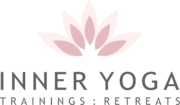Taking the first steps on your yoga journey can be daunting, as can trying anything new for the first time. It is a common misconception that you need to be flexible to do yoga – in reality, the term yoga actually has nothing to do with flexibility. “Yoga” is a Sanskrit word meaning “to yoke”, or “to bring together”. This can be interpreted in multiple ways – to bring together the body and the mind, bringing together breath and movement (in the case of vinyasa yoga), or even to unify all components of the self. Yoga is a powerful tool for connection – connecting the parts of ourselves, whether it be deepening our relationship with our body, mind, or breath. By connecting with ourselves in this way, we have the ability to navigate life with a greater sense of ease and calm – in our body, our mind, and our being.
Physically, yoga has the power to strengthen our bodies and increase our range of mobility drastically. While yin yoga emphasizes mobility, yang yoga is its counterpart – the strength component of the practice. Both are required for a well-balanced yoga practice – which makes a yin-yang yoga teacher training in Bali a great way to initiate your deepening yoga journey. While stiffness and lack of coordination may be prevalent when beginning yoga, in time range of motion, strength, and coordination all improve significantly. A wise yogi once said, “Saying you’re too inflexible to do yoga is like saying you are too dirty to take a bath.”
While initially approaching yoga may be intimidating in ways, the change in the state of your body and the state of your mind is nearly immediate. One of the fundamental principles of yogic philosophy, Ahimsa, is a guiding light for all yogis – especially beginners. Ahimsa is the practice of non-violence and compassion towards oneself and others. It teaches us to approach our practice with patience, self-compassion, and love. Rather than striving for perfection in each pose, by embracing Ahimsa, the journey of growth and expansion of self-awareness is the measure of success. As you will quickly learn on a 200-hour yoga teacher training in Bali, with consistent practice, it is inevitable that strength, flexibility, and balance improve, both in your body and mind. As each day and each practice passes, the shifts in the body and mind are quickly apparent.
Few containers make this as easily apparent in our own bodies as a 200-hour yoga teacher training. The self-awareness acquired through a regular yoga practice, both physical and mental, spills over into daily life, making individuals more mindful of posture, breath, reactivity, and overall well-being. Physically, posture is generally improved and tension reduced – enhancing overall vitality. Beyond the physical, the emotional growth and expansion through a more easeful awareness and expression of emotions is beneficial to practitioners new and old – both on and off the mat.
While the rewarding and transformative qualities of yoga require sincere effort and dedication, the physical, mental, and emotional benefits will likely be experienced fairly immediately. Whether it be on a yin-yang yoga teacher training in Bali or on your mat at home, embarking on a regular yoga journey sheds light on all components of the self. Svadhyaya, or the yogic practice of self-study, is at the center of a regular yoga practice and encourages exploration of the self beyond the physical- delving into mindfulness, limiting beliefs and emotional blockages. Through a deeper understanding of one’s body and inner world, a greater sense of ease and peace can be experienced in everyday life.

